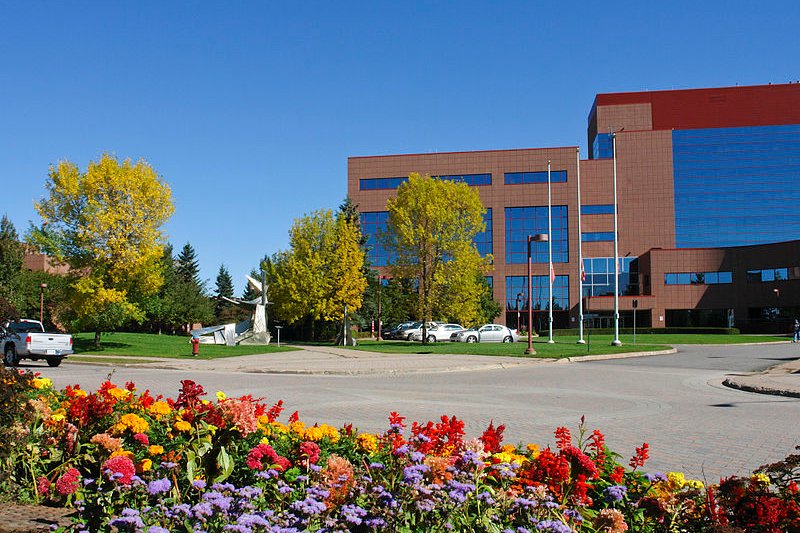 Roberta Bondar Place, Sault Ste. Marie, Ontario
Roberta Bondar Place, Sault Ste. Marie, OntarioSource: https://commons.wikimedia.org/wiki/File:Roberta_Bondar_Place.jpg
Author: Sam311

Sault Sainte Marie is a city on the St Marys River in Ontario, Canada. It was named after the rapids in the river, and is translated as Saint Mary's Rapids. The city covers 223.26 sq km (86.2 sq mi) and has a population of 75,000 people. It is across from Sault Sainte Marie in Michigan.
Sault Sainte Marie is one of the oldest European settlements in Canada. It was first explored by Étienne Brûl&eaucte; in 1623. He found that the area was inhabited by the Ojibwa tribe. He named the rapids Sault de Gaston, after Gaston, Duke of Orléans, who was the brother to King Louis XIII of France.
In 1668, French Jesuit priests arrived at Sault de Gaston, and renamed it Sault Sainte Marie (or to be exact, Saults de Sainte-Marie), after the Blessed Virgin. In those days, the settlement thrived on fur trading. It attracted a cosmopolitan mix of Europeans and First Nations tribes.
Sault Ste. Marie was incorporated as a town in 1887, and reincorporated as a city in 1912. In 1990, the city council of Sault Ste. Marie made English the only language for municipal services, a move that displeased a wide segment that speak French as their mother tongue.
Visiting Sault Sainte Marie
The Sault Ste. Marie Airport (YAM) receives daily flights from Toronto, Ottawa and Thunder Bay.Places of Interest in Sault Sainte Marie
- Bushplane Museum
- Old Stone House
- Sault Ste Marie Museum and Art Gallery
 Latest updates on Penang Travel Tips
Latest updates on Penang Travel Tips

Copyright © 2003-2025 Timothy Tye. All Rights Reserved.

 Go Back
Go Back